Slovenia, despite being such a small country, is a land with a wonderful variety of landscapes. Sunny beaches by the Adriatic sea, stunning mountains in the Alps, and vast plains in the east.
There are many regions worth mentioning. Among them, there is one in particular, which has the distiction of being one of the most touristic and charming places in Slovenia. That region is called Goriška Brda. This region is bordered to the south by the city of Nova Gorica to the west by the border with Italy, and to the north by the Julian Alps.
Goriška Brda is often called the “Tuscany of Slovenia” because it is surrounded by rounded hills and soft slopes, many of them covered by vineyards, and various wine cellars. Furthermore, it has a rich history to tell and, of course, some delicious wines to try.
In June, you can experience the marvelous blossoming of cherry trees spreading across the Goriška Brda hills. Besides cherries, the area also has a lot of fruit trees like pears and apples. Also, during June there is even a cherry festival. Food and wine are, of course, one of the key things to see and do in the Goriška Brda. It’s hard not to be swayed by the fantastic Italian-inspired food or to drink wine with one of the friendly locals.
Table of contents: ()
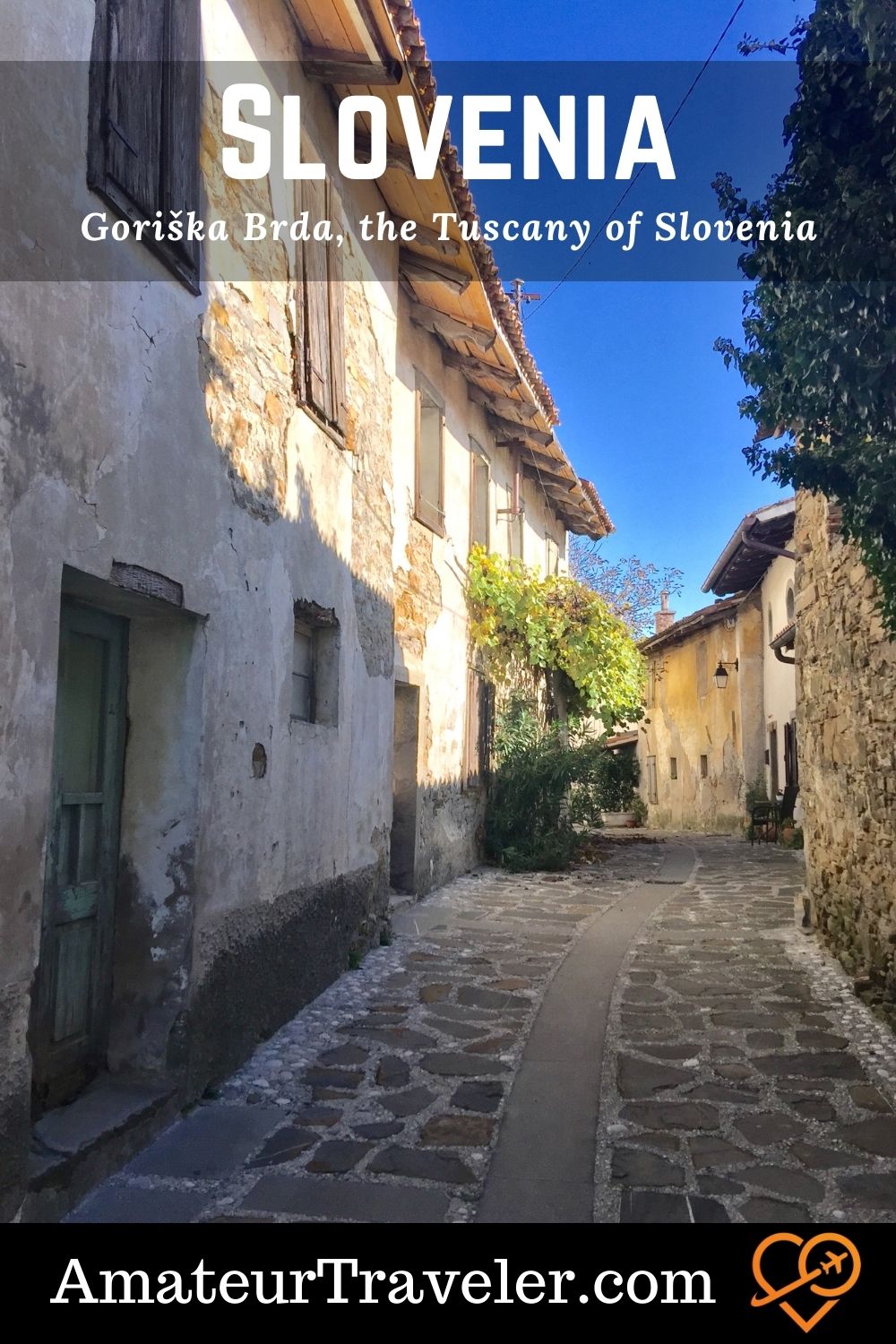
Brief History of the Goriška Brda
In the pre-Roman period, wine-growing began in this area when the Venets lived there. Because of the excellent weather, wine-growing started there. The tenth region was called “Venetia and Histria,” and Goriška Brda was part of it. It was called Colles or, In Collibus.
As far back as 181 B.C., the area was influenced by Aquileia, just across the river. Many amphoras (wine jars) found in this area show how vital the village and its environment were as a place where wine was grown. Goriška Brda was part of the principate of Aquileia, which was based in Italy. At the time, Goriška Brda was an established wine-growing area. Archaeological discoveries of so-called “villae rusticae,” the farming estates, show that this was the case.
Christianity spread through this area from Aquileia as early as the 6th century. The first church is thought to have been built in Medana in 630. In the 8th century, the Slavs started moving into the Goriška Brda region. They also began growing grapes and making wine. People in the area grew Pika, Glera, Trarka, Mukat, Pikulit, the grapes of St. Ana, and Rebula.
The boundary between the Venetian Republic and Austria was across the Goriška Brda wine-growing area until the 19th century when, just after the unification of Italy and the institution of the Austro-Hungarian empire, this became the crossing point between these new states. Many people at the Vienna court knew and liked the high-quality wine from Goriška Brda. This made Austro-Hungary a big market for Goriška Brda. During the second half of the 19th century, French grape varieties were brought to the area. They were Pinot Gris, Chardonnay, Sauvignon, Cabernet Sauvignon, Cabernet Franc, and Merlot, among other things.
Goriška Brda and the Wine Experience
During your trip to Slovenia’s Tuscany, why not stop at the Gredic Castle Boutique Hotel for a cheese and wine tasting? This is at the core of the Goriška Brda. In the same way, the wines of Brda are like the wine region on its own: diversified, endless, and captivating, also natural and exquisite. This is because of the unique climate, which has both powerful Alpine and mild Mediterranean influences, as well as mineral and rich soil and persevering and skilled winemakers. The result is some of the most exhilarating wines on Earth. Their impressive wine cellar is a great place to enjoy a wide selection of Goriška Brda wines with your friends and family. They added a touch of sophistication, harmony, and culture to make it unique.
Gastronomy and Cuisine Specialties of the Region
Goriška Brda Mediterranean cuisine is gentle and fresh. The local residents use a bunch of herbs and wild foods, olive oil, and wine when they make food. Because of its great food and wine, Brda was named one of the best places to visit in Slovenia in 2015 by the EDEN ( European Destinations of Excellence ). So, if you’re a food lover or a food enthusiast, come and try Goriška Brda cuisine. Here is a rundown of what cuisines you should try when visiting Goriška Brda.
Frtalja
Frtalja is a simple dish usually made during spring and summer. It is an herbal omelet blended with eggs, but eggs were not used in everyday food in the past. Also, seasonal herbs like balm-mint, chives, feverfew, sage, and a pinch of salt from the herb garden are used. If you want to, you can put a few prosciutto or sausage to make the dish taste better. People who go on walks through the vineyards in Goriška Brda enjoy Frtalja as a snack.
Kuhna
Kuhna, which means “one-pot dish” (enolončnica) in the Slovenian language, is a unique type of dish in this region. This word came from Italy after World War I when local people came home from the working camps. These thick soups were made in the winter with ingredients from the cellar, like beans, potatoes, turnips, and more.
Toč with white polenta
Toč is yet another identifier for a sauce. People in Goriška Brda used to make this dish every day. It goes well with polenta. Točirati means to put a bit of polenta in a sauce and let it soak up the sauce. Briški tond, which means plate in their dialect, is where they usually put the Toč and the white polenta. People in the area know how to cut polenta uniquely.
Rebula wine
You can’t leave the Brda region without having tried Rebula wine. People here and in the Friuli-Venezia Giulia area of Italy grow Rebula or Ribolla Gialla, a white wine grape growing on the rolling hills of these regions. It is usually a dark wine with a high acid level and numerous floral aromas. And it goes well enough with Soca trout, as well. You can meet the winemakers personally and try some Brda wines, too.
Best Time to Visit Goriška Brda
During May and June, you can eat dark-red cherries and delightful apricots. In October, you can enjoy the beautiful scenery. There are peaches, figs, and the first grapes in the summer. The grape harvest starts in early fall, and it’s a busy time.
Temperatures and the weather are best in the spring and early summer when it’s not too hot. The emerald Soca River or the Adriatic Sea is nearby to help you cool down, though. When the harvest is in full swing during the fall, there are many chances to taste the local cuisine. The Goriška Brda Wine Cellar has wine tasting events all year long.
Top things to see and visit in Goriška Brda and its surroundings
Kromberk Castle
The first stop is the Kromberk Castle. It is a two-story Renaissance castle that was a fortress restored in the 17th-century but built in the 13th-century by Henrick Dornberg. The Goriska Museum has been situated here for more than 50 years. Inside the castle, there is a vast collection of artworks, cultural and historic artifacts, and a hall specifically for occasional shows and discussions.
The castle was named after Ivan Marija Coronini, who was the owner and became “von Cronberg” in 1609. The wars damaged the castle, but it was rebuilt after each one. When the Goriska Museum was moved into the castle in 1854, it experienced a number of renovations, which Architect Janez Suhadolc headed.
Because it is the home of the Goriska Museum, it features artworks from Medieval times and the Baroque period. It also showcases the arts of artists like Franc Kavi and Anton Karinger, whose works are from the 19th century.
It has a square floor plan and four corner towers. In addition to that, in the entry hall of the building, we noticed the small lapidary of coats of arms of the noble families from Goriska. There is also a restaurant in the eastern wing of the castle’s first floor.
The richness of architecture and design can be easily seen in this castle. Looking from the south, there is a small grotto and a statue of Kronos. The Falcons’ tower is on the west side of the building. And of course, the parking space is located where the horse stables used to be situated.
Solkan Bridge
After the stunning castle of Kromberk, visit the captivating bridge, the Solkan Bridge. It is the world’s largest stone bridge. This clearly shows how much people know about the construction of houses and bridges at the beginning of the 20th century.
It was built to be a part of the train line from Trieste and Wien. The enchanting beauty is because it is made of stone. It indeed looks like a rainbow that goes over the Soca River. The bridge goes up to 36 meters and 219.70 meters in length.
The Solkan bridge ends the thousands of years of building vast and extensive stone bridges. It is the last among the group of large bridges built on railroads in Austria-Hungary at the turn of the 19th and 20th centuries. Honestly, the Solkan bridge features a breathtaking view and is a perfect example of the best bridges made by the engineers of Austria.
Sabotin Hill
For the next stop, indulge further in nature and pay a visit to Sabotin Hill. It is 609 meters or 1,998 feet tall, and it towers over the two towns, Nova Gorica and Solkan. If you are like us, who love to explore nature and experience historic places, this is the place to go!
According to the locals, after World War I, the Italians made Sabotin Hill a holy place and built a memorial park that doubles as an open-air museum. Every day, it seems like it is telling everyone who pays a visit to it that wars do not work well and that we should all live in peace.
There is no denying that it is indeed fascinating because of its history. Experience walking through the tunnels and caves that the Italians and Austro-Hungarians carved as they fought on the Isonzo Front. Surely, World War I left a distinctive and indestructible mark on this hill.
Sabotin hill is also known as the “lonely hill” in the Trnovo Plateau since it is far from the other hills in the vicinity and has the iconic and famous Solkan Bridge. If you love exploring, you can go to the top in six different ways.
Even though this hill is among the lower hills, it still offers you a breathtaking view of the Goriška Brda, the renowned vineyards and wineries, Julian Alps, Soa River, Karst Plateau, and Friuli Lowlands.
Gonjače Lookout Tower
The trip is not done yet; Goriška Brda has more to offer. A lookout tower is located at Mejnik hill, just above the Gonjače Village. If it is a sunny day, chances are the whole areas of Goriška Brda, the Carnian, and the Julian Alps will showcase their beauty while looking down from the Gonjače lookout tower. It is an ideal place if you just want to chill down and feed your eyes with a bunch of different places in town. Climb even further and gaze at the numerous vineyards, and nearby settlements, just like the village of Smartno.
The Gonjače Lookout Tower is 23 meters long, has exactly 144 steps, and was built in 1961. Marko Slajamer is the architect who made plans for the tower. When we visited the tower, we also visited the memorial next to the building in commemoration of the 351 people who died in World War II on the right bank of the Soca River. It is a monument was also created by Janez Boljka, a sculptor and painter.
Šmartno
In the middle of Goriška Brda, Smartno is a magnificent and unique place to live in. According to the people there, it was first discussed in written sources in 1317. It was built on the site of the Roman stronghold. At first, they built towers and walls to protect against the Turkish people. Then added more walls and towers to keep the Turks out.
The Counts of Gorizia owned the land in this area for some time. However, after the death of the last one, the Goricko Region became part of the Habsburg dynasty. Smartno is part of a group of anti-Turkish camps and hamlets in the Brdo and Primorska Regions that connect to each other. For centuries, the town was a frontier fortress. The danger from Venice passed in the middle of that century, so it became a village again.
Many homes from the middle-ages are near the St. Martin Church in Goriška Brda, which is the largest parish church in the town. The fresco artworks of Tone Kralj can be seen inside the church. According to the locals, the church’s tower was built as a fortress tower originally.
In the narrow streets, discover the Briska home, a small museum. Notice how they incorporated the Gothic-style stone portal. The locals said it was renovated during the rustic Baroque period. The house is divided into rooms, a kitchen, and an attic. It is noticeable that the house is a combination of typical homes in Goriška Brda and folk architecture. They have a gallery for exhibitions and an event hall in the village.
Smartno village is indeed a cultural heritage due to its extraordinary architectural heritage.
Dobrovo Castle
The Renaissance Dobrovo Castle was built around 1600 on the site of an earlier fortification. It is on the west side of the Dobrovo settlement and looks out over Goriška Brda. During the Second World War, the Gorika Museum took over the castle. The castle is built in the same style as a type of Venetian castle from the 17th century. It is three-stories high and is square. The Dobrovo castle also has four towers surrounding it.
On the ground floor, there is an entrance hall. There is the Knights Hall on the first floor, where musicals and other events occur. There are still some parts of a fresco in the Hunters’ Room. There are also some original furniture pieces. The paintings were done by the artist Clement Del Neri in 1894. At the front of the castle, there are traces of a old park that used to be there.
There is a restaurant and a wine cellar on the ground floor that sells wine from Goriška Brda. The castle is also used for art shows and other cultural activities in the castle yard.
The Castle Collection in Dobrovo – An Attempt at Reconstruction and Ad Sanctos are two of the displays. Archaeological research at the Church of St. Leonard in Dolnje Cerovo is always on display. The chapel has a permanent display of Gothic frescoes from other churches in the North Primorska area.
There is a 19th-century cultural history collection on the first floor next to the Knights Hall. It includes photographs of everyday things and works of art. Also, there is a 17th-century fresco that shows the attack on the city by the sea and the coats of arms of the people who used to own it. The last owner, Count Bagueri, had a number of paintings, and some of them are on show in the castle.
The Holy Mountain (Sveta Gora)
In Sveta Gora, near Nova Gorica, there’s a big pilgrim center with a spectacular basilica. It’s a valuable piece of cultural history. Urka Ferligoj, a local shepherdess, saw an apparition of the Virgin Mary in 1539, and a 14th-century church was built soon after in that place.
The Late Gothic statue of the Mother of God with Jesus Christ and the famous painting of the Queen of the Holy Mountain, crafted by a Venetian artist, dates from this time. Much of the basilica was destroyed in the First World War. The current building was built from 1924 to 1928 in the style of Neo-Baroque. Visitors can also appreciate and respect the ornately carved ceiling, Stations of the Cross, stained glass windows, and the unique bell tower with a set of magnificent bells.
Goriška Brda Wine Cellar
Even though Slovenia isn’t very big, more than 24,200 acres of grapevines are there. The oldest vine in the world that’s been around for 400 years is also in Slovenia.
The Wine Cellar Goriška Brda is the largest wine cellar in Slovenia, and it has been making great Brda wines for hundreds of years. The Brda Wine Cellar is home to some of the best wines in the area. It links 400 family winemakers since 1957, and each year it makes 6-8 million liters of wine. They have fresh, fruity, and light wines that are easy to drink. They also have high-quality mature wines and sparkling wines, and even some native specialties that are a wonderful experience, like Verduc and Pikolit dessert wines. They also have a wine cellar with 100,000 bottles of the best vintages, along with a bottle of Rebula wine made back in 1957.
Gostilnas
Of course, one should not forget to try the delicacies of the place. In Goriška Brda, there are traditional Slovenian restaurants named “Gostilna”. This kind of restaurant serves various local dishes and delicacies: the Goulaz, mainly a soup made of beef and potato, Jota, another soup made up of cabbage, and Idrijski žlikrofi, a pasta dish. To have the best experience in Goriška Brda, don’t miss the chance to go to a Gostilna and taste the local cuisine together with delicious red Teran wine.
Gostilnas are typically owned by families and try to keep traditions alive in their menus and furniture. They also try to keep healthy eating principles in mind when they make the food they serve.
To further understand the idea of the Slovenian Gostilna, it can be defined as:”a Gostilna is a kitchen for the community. To make simple food that tastes remarkable. ”. There are a few norms in their kitchen: They don’t mess around and make foams, and french fries aren’t welcome. They also don’t have a lot of wine because they make everything in-house, even the ice cream for special events. For them, simplicity is the key.
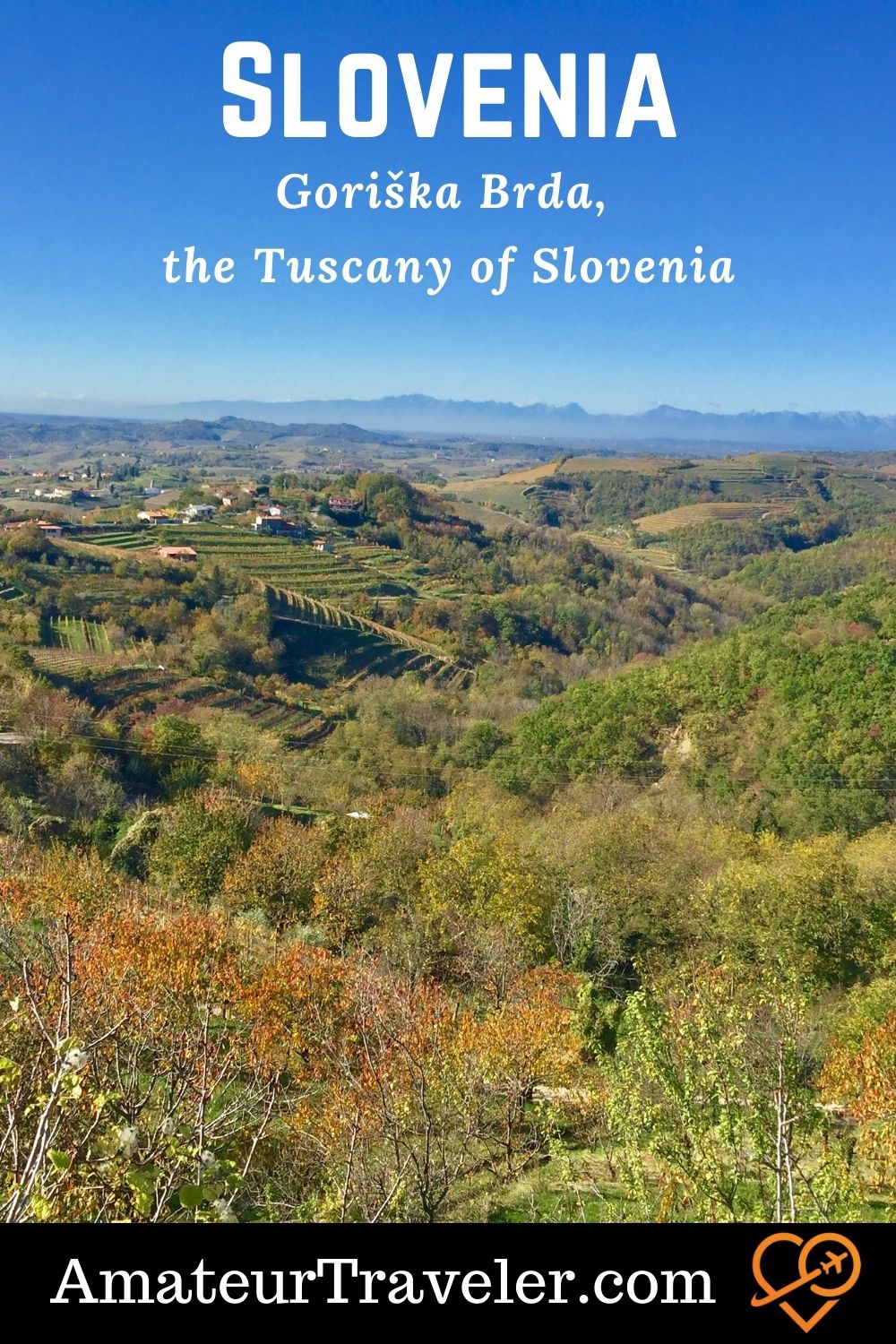


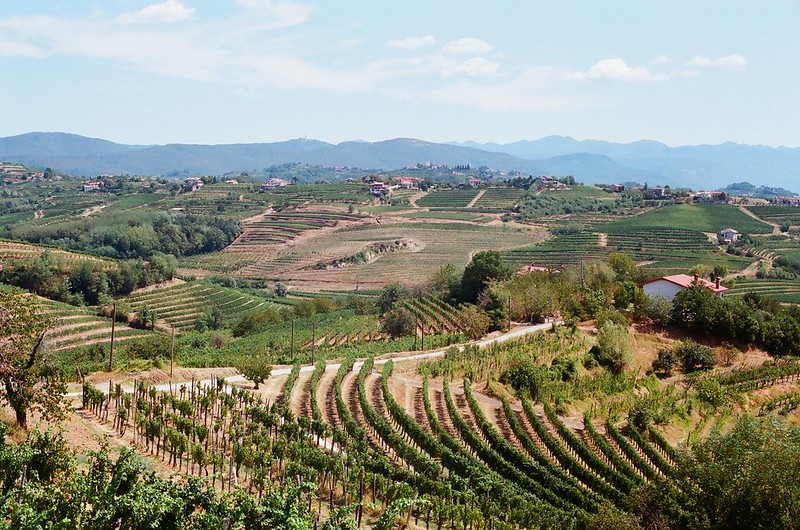
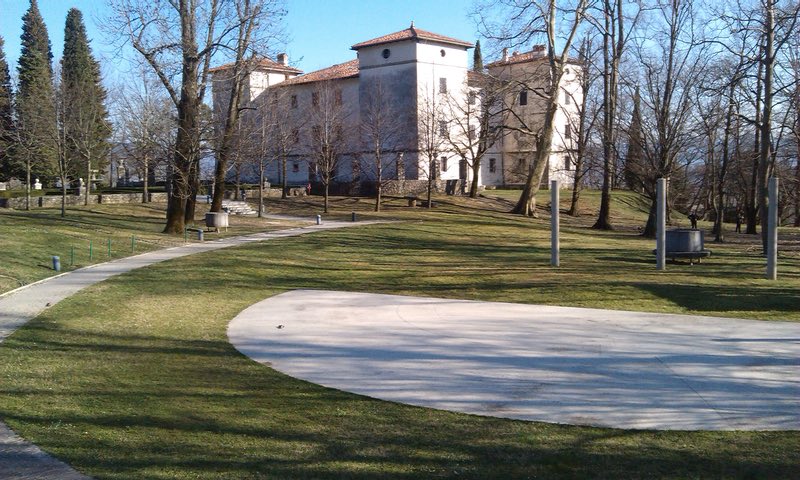
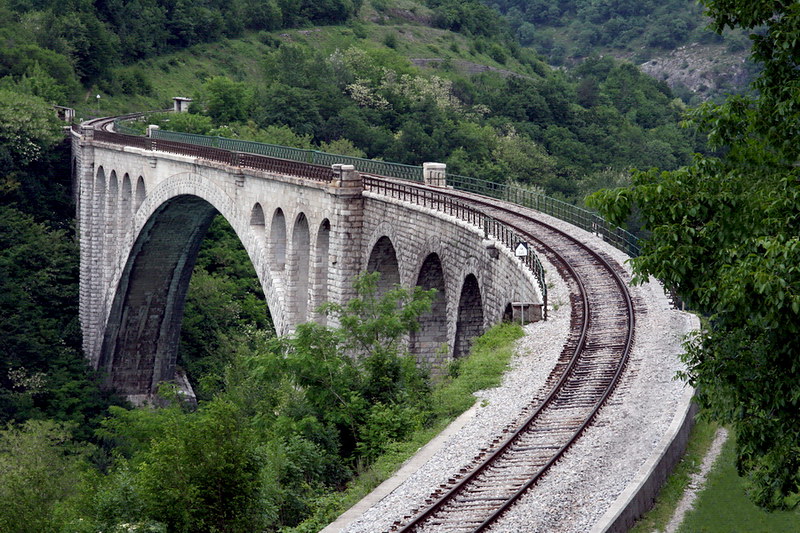
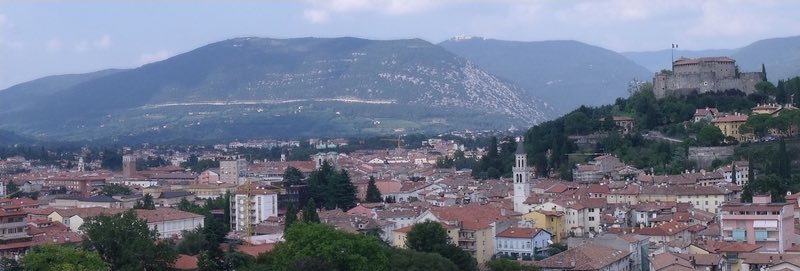
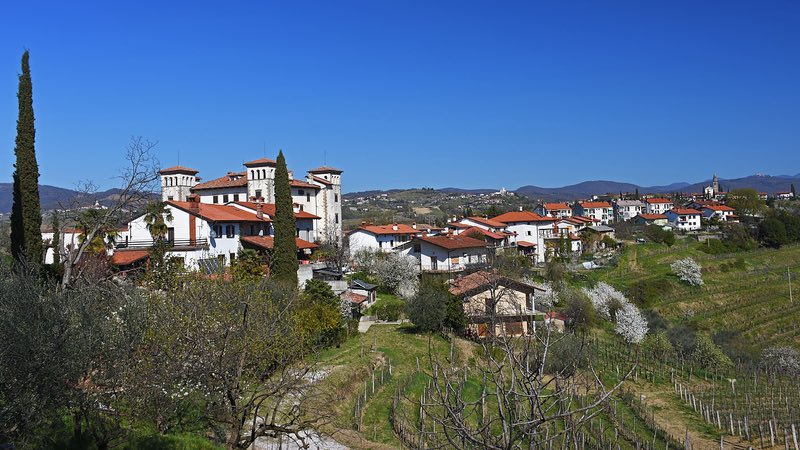

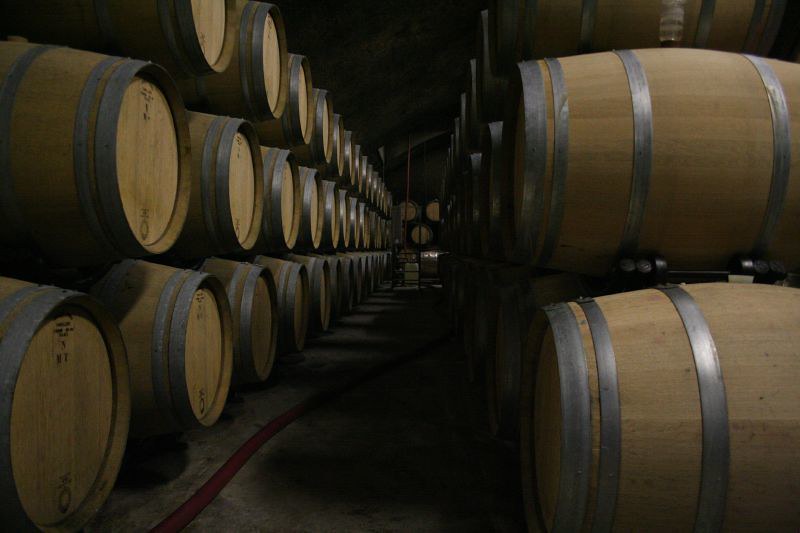
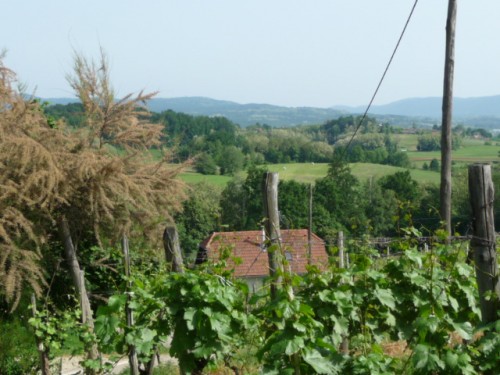 Wine and Ancestry in Slovenia
Wine and Ancestry in Slovenia Travel to Tuscany, The Hill Towns of Southern Tuscany – Episode 350
Travel to Tuscany, The Hill Towns of Southern Tuscany – Episode 350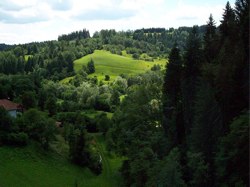 Travel to Slovenia – Episode 162
Travel to Slovenia – Episode 162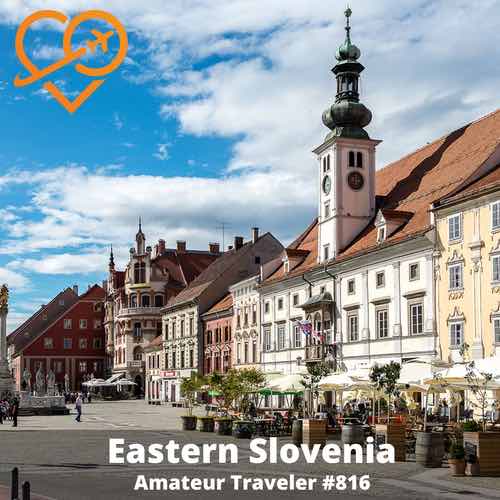 Travel to Eastern Slovenia – Episode 816
Travel to Eastern Slovenia – Episode 816

CHYA
Says:May 22nd, 2022 at 1:36 am
wow